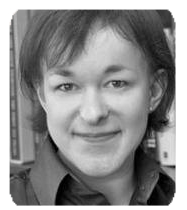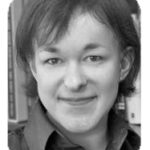I grew up reading Francesca Lia Block, passionately following Weetzie Bat and her band of misfits through this atmospheric, strangely delirious land called Los Angeles. I was swept away with Bless Me, Ultima, and I fell hard for Love in the Time of Cholera, The House of the Spirits, and Eva Luna. Whenever my life needed a little more magic, I could read about a girl who tastes emotions, or a boy who grows goat horns.
Blending the magical and real isn’t new in literature, but the term lo real maravilloso, marvelous realism, came into popularity during the 1940s, when Latin American authors like Alejo Carpentier and Miguel Angel Asturias, followed by Jorge Luis Borges, began to merge realistic narrative and setting with fantastical elements. When an English translation of Gabriel Garcia Marquez’s One Hundred Years of Solitude was published in 1970, followed shortly by works from Isabel Allende and Laura Esquivel, the style became an international phenomenon.
When I use #MSWL to talk about books, I’ve tweeted interest in representing magical realistic projects. But when I read queries, it’s clear that it’s a term that’s become common without really understanding its origins and meaning. It’s used synonymously, but incorrectly, for novels that are realistic with magical elements, or when people don’t want to categorize their work as /gasp/ fantasy.
Magical realism is not unanimously agreed on by members of the publishing community, but there are certain elements that I look for when I look at submissions.
Next week I will talk about magical realism on submission—when it becomes fantasy—and what agents are looking for when they want magical realism.
See a list of agents and editors wishing for Magical Realism.
*
Roseanne Wells joined The Jennifer De Chiara Literary Agency as an associate agent in 2012. An avid reader, Roseanne approaches agenting as a writer’s advocate, editor, and partner. She is a member of SCBWI, and you can find her on Twitter @RivetingRosie.



I would love to know more. I mix magic with history and am wondering if my work falls under this category.
I’m eager to read your second post on this subject. I’ve always loved magical realism, though I have to admit I’m one of those who think of it as realism with surreal elements (not “magic” a la Harry Potter), so I could be wrong in my assumptions. My favorites are novels by Alice Hoffman, which I consider magical realism, and Beloved by Toni Morrison, Like Water for Chocolate by Laura Esquivel, and Chocolat by Joann Harris.
I used to write urban fantasy, but it no longer interests me very much. I’m currently working on a novel set in a small coastal town where a waiting storm still out at sea is affected by the emotions of the town’s people, one character in particular. It’s a metaphor for the overall theme of the story that centers around forgiveness. I consider it magical realism (though there is no magic other than superstition).
I’m looking forward to the next post on definitions. When I described my WIP to someone and explained it had to do with curanderismo, the ancient Mexican art of healing, someone said it was magical realism. I don’t see curanderas (the healers) as magic nor the healing arts as magic, but the person insisted my WIP is magical realism.
Waiting impatiently for Part II. Rewriting opening specifically for more focus on MR in my H/LF. Many thanks Roseanne.